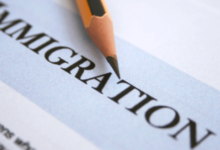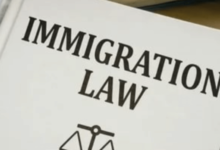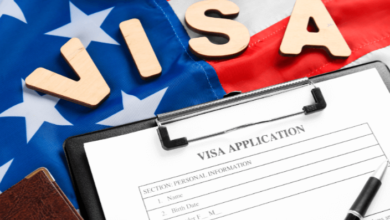How Immigration Shapes Cultural Diversity Around the World

Immigration has been a central force in shaping societies throughout history, contributing to the formation of culturally diverse nations across the globe. The movement of people from one country to another has not only impacted economic and political landscapes but also transformed social and cultural fabrics. Immigration plays a pivotal role in creating cultural diversity, blending traditions, languages, customs, and ideas. The global migration of people, whether driven by economic opportunities, political asylum, or personal aspirations, has led to dynamic, multicultural societies that define modern life.
The Historical Role of Immigration in Cultural Formation
From ancient times to the present, immigration has been a catalyst for the exchange of ideas, traditions, and ways of life. Early human migrations, such as those of the Phoenicians, Greeks, and Romans, contributed to the spread of languages, religions, and philosophies. These migrations laid the foundation for cross-cultural interactions that would continue for centuries.
In more recent history, events such as the colonization of the Americas, the transatlantic slave trade, and mass migrations during and after world wars have reshaped national and regional identities. For instance, the United States, often described as a “melting pot,” owes much of its cultural diversity to waves of immigrants from Europe, Africa, Asia, and Latin America. Similarly, countries like Canada, Australia, and the United Kingdom have become multicultural societies through the arrival of immigrants from various regions, each bringing their unique cultural heritage.
The Role of Immigration in Language Diversity
One of the most immediate and visible effects of immigration is the introduction of new languages and dialects to a host country. Multilingualism becomes more common in cities and regions where immigration levels are high. This not only enriches the linguistic landscape but also fosters cross-cultural communication and understanding.
For example, in the United States, the influx of Spanish-speaking immigrants has led to a growing bilingual population. In countries like Canada, where English and French are already official languages, immigration has introduced languages such as Mandarin, Punjabi, and Tagalog. The presence of multiple languages within a society highlights the cultural diversity brought about by immigration and challenges nations to adopt more inclusive language policies.
Culinary Diversity: A Taste of Immigration’s Impact
One of the most enjoyable ways to experience the effects of immigration is through food. As people migrate, they bring their culinary traditions with them, introducing new flavors, cooking techniques, and ingredients to their host countries. The fusion of cuisines is a direct result of cultural interaction between immigrants and local communities.
In the United States, for example, the arrival of Italian, Chinese, and Mexican immigrants in the 19th and 20th centuries significantly influenced the nation’s food culture. Today, dishes such as pizza, sushi, and tacos are considered staples of the American diet. Similarly, in the United Kingdom, Indian cuisine has become deeply embedded in British culture, with dishes like chicken tikka masala often regarded as a national favorite. These culinary exchanges demonstrate how immigration fosters cultural diversity by blending traditions from around the world.
Religious Pluralism and Immigration
Immigration also brings religious diversity, as people carry their spiritual beliefs with them when they move to new lands. The arrival of immigrants from different religious backgrounds challenges host societies to become more inclusive and tolerant of various faiths.
In countries like the United States, where freedom of religion is a constitutional right, immigration has led to the coexistence of numerous religious groups, including Christians, Jews, Muslims, Hindus, Buddhists, and others. This pluralism contributes to a rich cultural tapestry, where interfaith dialogue and cooperation become essential for maintaining social harmony.
Similarly, European nations, which were historically more religiously homogenous, have become increasingly diverse due to immigration from Africa, Asia, and the Middle East. This influx has introduced new religious practices, festivals, and places of worship, further enriching the cultural landscape.
Cultural Festivals and Celebrations: A Shared Heritage
One of the most visible and vibrant ways immigration shapes cultural diversity is through the celebration of cultural festivals. Immigrants often bring their traditional celebrations, holidays, and festivals to their new homes, which are then shared and embraced by the broader community. These festivals serve as an opportunity for cultural exchange and understanding, allowing people from different backgrounds to celebrate diversity together.
In countries with high immigration rates, such as Canada and Australia, multicultural festivals showcasing food, dance, music, and art from various cultures have become common. Events like Carnival in Brazil, Chinese New Year in cities around the world, and Diwali celebrations in the UK reflect the multicultural makeup of these societies and demonstrate how immigration fosters a sense of global unity.
Challenges of Immigration and Cultural Integration
While immigration brings many benefits, it also presents challenges, particularly in terms of cultural integration. Immigrants often face difficulties adapting to new cultural norms, learning new languages, and finding their place within a host society. Conversely, host countries may struggle with managing the social, economic, and political implications of a growing immigrant population.
Cultural assimilation, where immigrants adopt the dominant culture, can sometimes lead to the erosion of their own cultural identities. On the other hand, multiculturalism promotes the preservation of diverse cultural practices but may cause social fragmentation if not managed carefully. Balancing these competing forces is an ongoing challenge for governments and societies worldwide.
For example, in some European countries, debates over immigration policies and cultural integration have led to political tensions and the rise of nationalist movements. Concerns about job competition, security, and cultural identity often fuel these debates. However, successful integration policies that promote education, employment opportunities, and social inclusion can help mitigate these challenges and create more cohesive societies.
Economic Contributions of Immigrants and Cultural Innovation
Immigration not only enriches cultural diversity but also drives innovation and economic growth. Immigrants often bring new skills, perspectives, and entrepreneurial spirit, which can lead to the creation of new businesses, products, and services. This economic dynamism contributes to the cultural vibrancy of a society, as immigrants introduce new ways of thinking and problem-solving.
For instance, Silicon Valley in the United States is home to a significant number of immigrant entrepreneurs and tech leaders who have contributed to the region’s reputation as a global hub of innovation. Similarly, immigrant-owned businesses in cities around the world contribute to local economies and enhance cultural diversity by offering unique goods and services rooted in their cultural traditions.
Immigration and the Arts: A Cultural Exchange
The influence of immigration on the arts is another powerful example of how it shapes cultural diversity. Immigrants contribute to the artistic landscape of their host countries by introducing new forms of music, dance, literature, and visual arts. This cross-cultural exchange enriches the creative expression of societies and fosters a deeper appreciation for global art forms.
In music, for example, genres like jazz, reggae, hip-hop, and salsa have their roots in immigrant communities and have gone on to gain worldwide popularity. Immigrant artists, writers, and filmmakers also use their work to explore themes of identity, displacement, and belonging, providing a voice for their experiences and contributing to the cultural dialogue within their new countries.
Social Cohesion and Cultural Identity in Immigrant Societies
Immigration shapes not only the external cultural expressions of a society, such as festivals, food, and arts, but also its internal sense of identity. Multicultural societies must navigate questions of social cohesion, national identity, and cultural integration as they become more diverse.
The concept of a national identity is often challenged and reshaped in countries with significant immigrant populations. Rather than adhering to a singular cultural narrative, these societies must embrace a more inclusive and pluralistic sense of identity that reflects the contributions of all cultural groups. This process can lead to stronger social cohesion if handled with care, but it also requires ongoing efforts to promote equality, tolerance, and mutual respect.
In countries like Canada, the national identity has evolved to include multiculturalism as a core value, celebrating the diverse backgrounds of its citizens as a strength. Other countries are still grappling with how to integrate immigrants into their national narratives, but the trend toward embracing diversity is becoming more common.
Globalization and Immigration: A Two-Way Exchange
In today’s interconnected world, immigration is not a one-way flow of people from one country to another. Globalization has created a dynamic environment where cultural exchange occurs in multiple directions. Immigrants contribute to the cultural diversity of their host countries while maintaining ties to their countries of origin, creating transnational communities that span borders.
This two-way exchange enriches both the host and origin countries. Immigrants often send remittances back to their families, support cultural initiatives, and facilitate business and educational exchanges between nations. This global network of immigrants strengthens cultural diversity on a worldwide scale and fosters a greater understanding of the interconnectedness of our world.
The Future of Cultural Diversity in a Globalized World
As immigration continues to shape cultural diversity, the future of multicultural societies will depend on how well countries manage integration and embrace diversity. Policies that promote inclusivity, social cohesion, and mutual respect will be essential in building harmonious, multicultural societies.
Technology and globalization will likely accelerate the pace of cultural exchange, creating new opportunities for cross-cultural collaboration and understanding. As people from different backgrounds continue to migrate, the blending of cultures will further enrich societies and create new, shared global identities.
Ultimately, immigration has the power to shape not only individual nations but also the world as a whole. By fostering cultural diversity, it helps create a more vibrant, inclusive, and interconnected global community.
Frequently Asked Questions (FAQs)
- How does immigration contribute to cultural diversity? Immigration introduces new languages, traditions, and customs to host countries, enriching the cultural landscape and fostering a more diverse society.
- What are the challenges of immigration in terms of cultural integration? Immigrants may struggle with adapting to new cultural norms and languages, while host countries may face challenges in managing social inclusion and cohesion.
- How has immigration influenced global cuisine? Immigrants bring their culinary traditions with them, leading to the fusion of cuisines and the introduction of new dishes in their host countries.
- What role does immigration play in religious diversity? Immigration introduces new religious practices and beliefs to host countries, contributing to religious pluralism and promoting interfaith dialogue.
- How do cultural festivals reflect the impact of immigration? Cultural festivals celebrate the diverse traditions brought by immigrants, showcasing food, music, dance, and art from around the world.
- What is the future of cultural diversity in a globalized world? As globalization and immigration continue, cultural diversity is expected to grow, with societies becoming more interconnected and inclusive.



